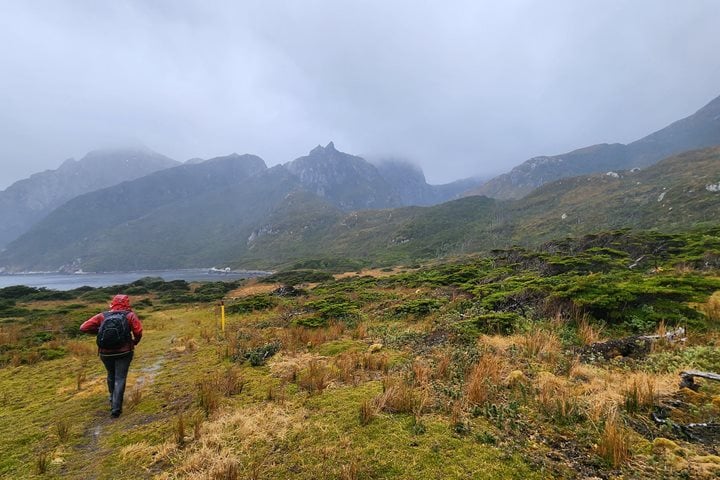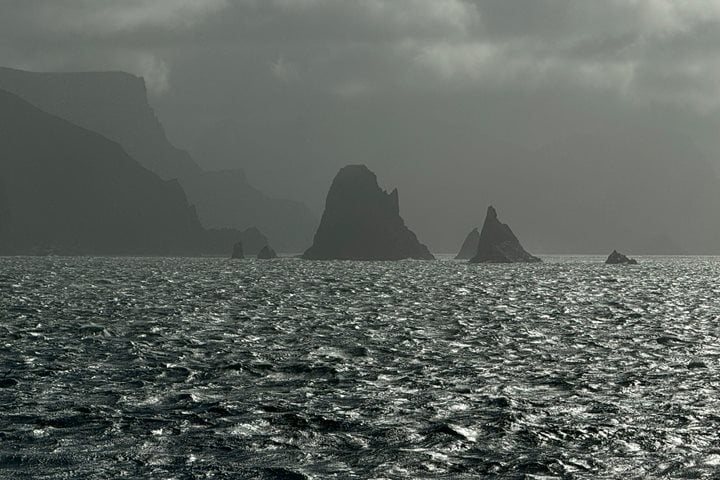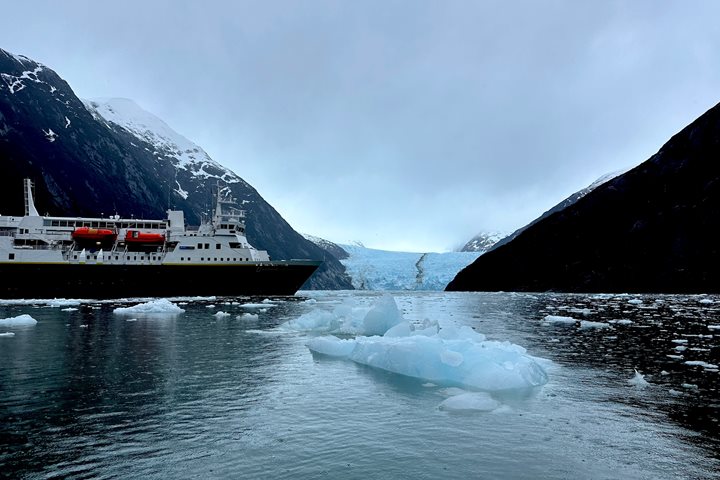The Chilean fjords region is one of the few remaining wildernesses in the world. Today, our destination was a place where concerned people and visionaries work hard to protect and maintain the beauty and uniqueness of the wilderness, specifically the temperate rainforest in the area. Native to this part of Chile is a tree named for the captain of the ship H.M.S. Beagle, Captain Robert Fitzroy. This impressive tree, commonly called
In the 1980s, a very successful couple who had become quite wealthy in the business of outdoor equipment and clothing fell in love with Patagonia. Through their passion for protecting this unique environment and their hard-earned wealth, they purchased a large tract of property along the coast of the northern Chilean fjords. At first a private reserve, Pumalin Park was the seed of a movement that just recently has ballooned into a massive series of connected parks and reserves extending north and south along the entire length of the Chilean fjords.
We had absolutely perfect weather for exploring Pumalin National Park, the result of efforts primarily by Kris and Doug Tompkins. Pumalin is a temperate rainforest with exceptional biodiversity—partly because it rains almost 100 inches per year. We were fortunate to visit when there was a rare sunny day.
Three activity options were presented to us. Earliest to depart the ship was a small group driving along the Austral Highway to the base
The second option was to hike an inland trail through thick forest along a fast-flowing stream and past cascading waterfalls. Many people chose this option in order to experience the forest and the
The third option was a short, easy walk through a beautiful section of forest. After finishing the various hikes, we all returned to the main park compound where we enjoyed some sweet snacks and warm drinks. We compared experiences and impressions of the sights and sounds and smells of the morning. It was a fabulous end to the day, and everyone agreed that we greatly appreciated the foresight of Kris and Doug Tompkins and the many locals and conservationists who have helped protect Pumalin, the







